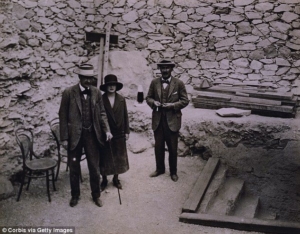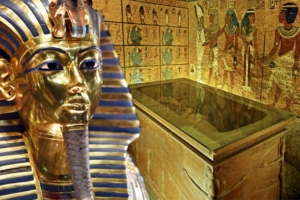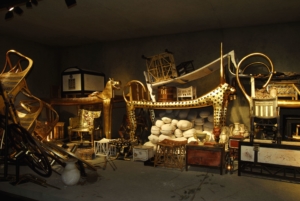 Ever face a problem or task so overwhelming you simply had no idea what to do or where to start? It’s that way with painting sometimes. The trick is taking that first step and seeing where it takes you.
Ever face a problem or task so overwhelming you simply had no idea what to do or where to start? It’s that way with painting sometimes. The trick is taking that first step and seeing where it takes you.
Ninety-five years ago, a plucky British archaeologist by the name of Howard Carter was having the same problem. He was in Egypt exploring the Valley of the Kings, convinced that there were still unearthed tombs there that might contain vast riches and undiscovered components of long-forgotten ancient history.
B ut by 1922, most of the ancient Egyptian tombs had already been discovered. But that of one little-known pharaoh was still unaccounted for. He was a boy king who’d died when he was just 18. His name was Tutankhamen, and after World War I, Carter began an intensive search for “King Tut’s Tomb.” But by November of 1922, he was about out of money, patience and time. His backers were about to pull the plug on his dig.
ut by 1922, most of the ancient Egyptian tombs had already been discovered. But that of one little-known pharaoh was still unaccounted for. He was a boy king who’d died when he was just 18. His name was Tutankhamen, and after World War I, Carter began an intensive search for “King Tut’s Tomb.” But by November of 1922, he was about out of money, patience and time. His backers were about to pull the plug on his dig.
T hen on this day in history, his workmen discovered a step leading to Tut’s tomb hidden in the debris near the entrance of the nearby tomb of King Ramses VI. Twenty-two days later, on November 26, 1922, Carter and fellow archaeologist Lord Carnarvon entered the interior chambers of the tomb, finding them miraculously intact.
hen on this day in history, his workmen discovered a step leading to Tut’s tomb hidden in the debris near the entrance of the nearby tomb of King Ramses VI. Twenty-two days later, on November 26, 1922, Carter and fellow archaeologist Lord Carnarvon entered the interior chambers of the tomb, finding them miraculously intact.
Thus began a monumental excavation process in which Carter carefully explored the four-room tomb over s everal years, uncovering an incredible collection of several thousand objects. The most splendid architectural find was a stone sarcophagus containing three coffins nested within each other. Inside the final coffin, which was made out of solid gold, was the mummy of the boy-king Tutankhamen, preserved for more than 3,000 years. Most of these treasures are now housed in the Cairo Museum.
everal years, uncovering an incredible collection of several thousand objects. The most splendid architectural find was a stone sarcophagus containing three coffins nested within each other. Inside the final coffin, which was made out of solid gold, was the mummy of the boy-king Tutankhamen, preserved for more than 3,000 years. Most of these treasures are now housed in the Cairo Museum.
And it all started with that first step.
 So no matter how deep the debris or tall the task, believe in yourself and find that first step. You just might be amazed at where it leads and the treasures you’ll discover at the end of the stairs.
So no matter how deep the debris or tall the task, believe in yourself and find that first step. You just might be amazed at where it leads and the treasures you’ll discover at the end of the stairs.









